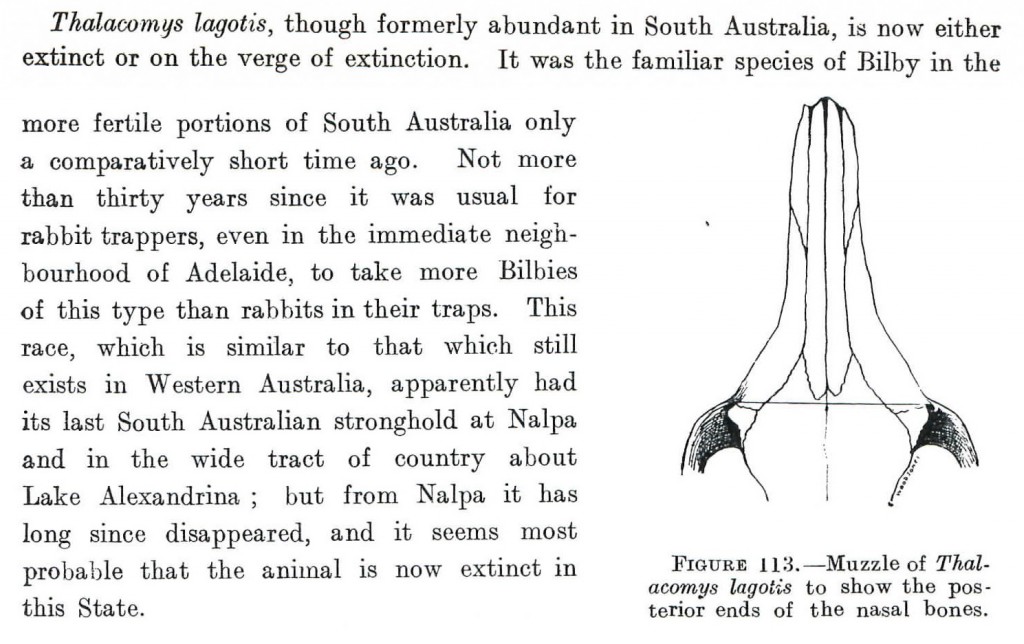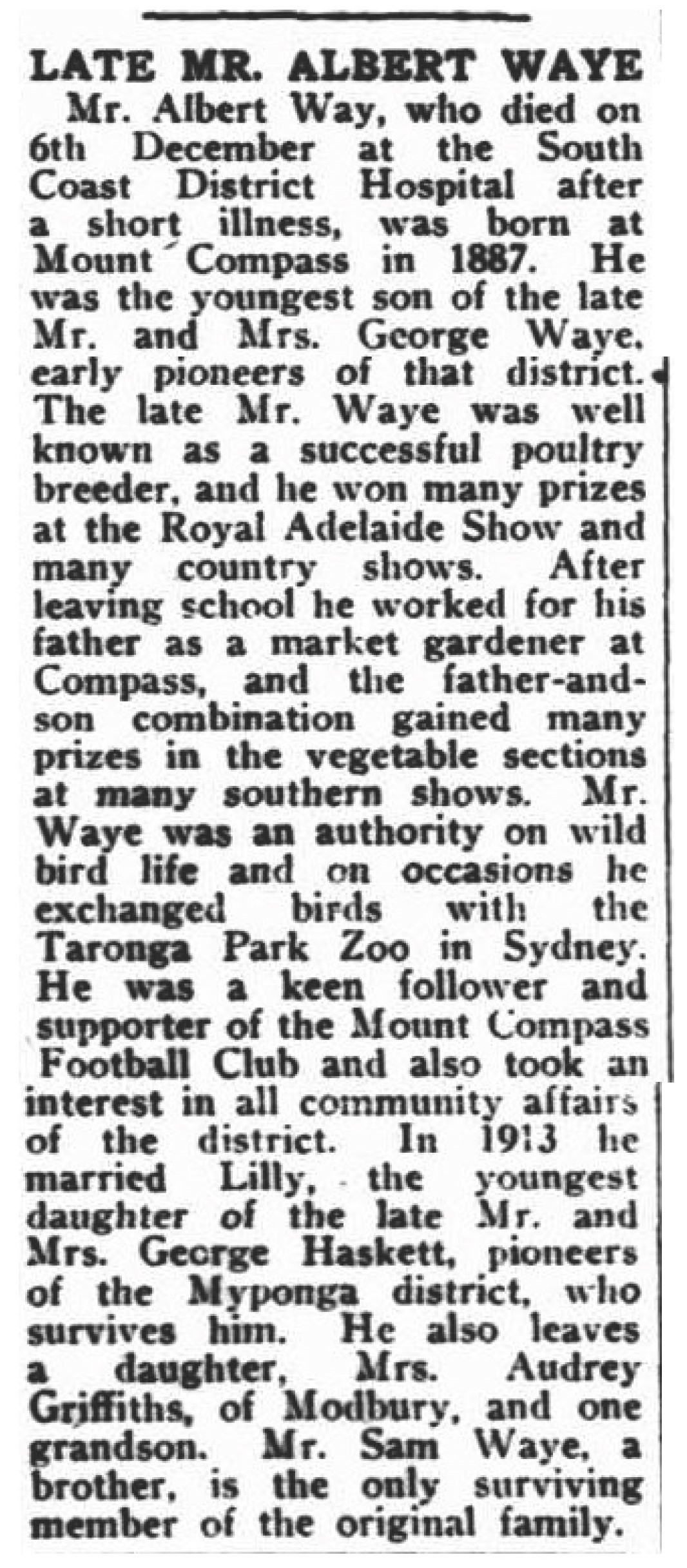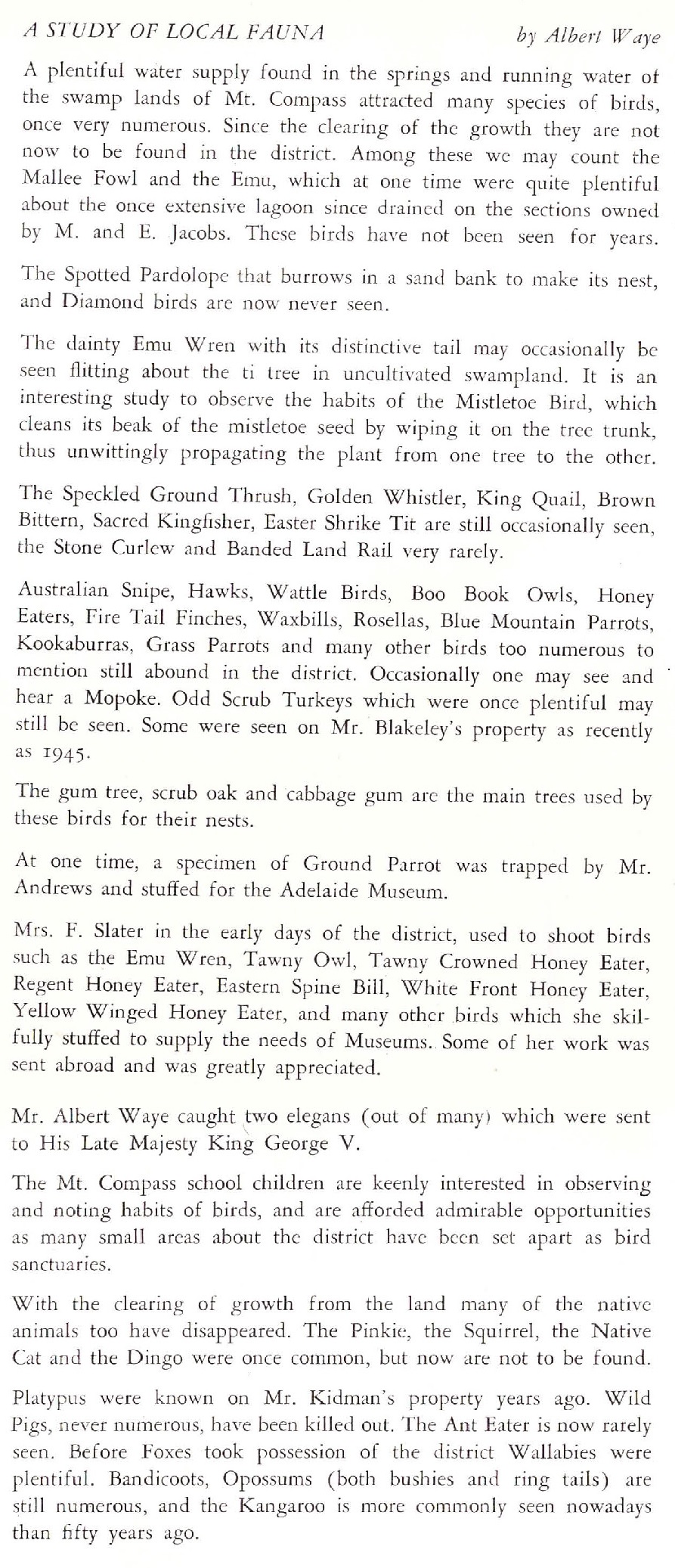Mainland Forgotten Fauna: Part 7 – Bilbies, Malleefowl and other Forgotten Fauna of the Fleurieu Peninsula
You never quite know what you are going to come across when digging through old references, and in working through some historical material for the Tookayerta Catchment project I came across a real jem. In fact, although it has been a while since the last Forgotten Fauna blog, it actually follows on from Part 6 of this series quite nicely.
Luckily for us, the local community of Mount Compass decided to record and publish their history in 1946, as recalled by a number of contributors – including some of the districts most elderly residents who’d been around since the area was settled. As well as lots of material that is proving to be very useful for our catchment study and understanding the history of drainage in the area, towards the end of the book there is also a section on Local Fauna by Albert Waye. Based on the observations shared, it is clear that Albert (who was born at Mount Compass in 1887) was a keen naturalist that paid attention to his surroundings and how they were changing.
The Hundred of Nangkita (originally known as Nkangkita), with its impenetrable swamps and dense stringybark heath over deep sand, was considered a “scrub desert” and left largely untouched for the first 50 years of SA settlement. It was finally opened up for development when the government resumed the pastoral lease over the area and surveyed it into parcels for closer settlement in the late 1880s and 1890s, meaning people like Albert (who grew up in what must have seemed like endless wilderness, full of interesting native fauna) witnessed a period of dramatic change.
Not only did drainage and clearance begin in earnest – then accelerate – physically transforming the landscape during his lifetime; but as a young man he also witnessed the shift in the pecking order of mammal predators in the ecosystem that we’ve been exploring in this series. Although he may not have understood the mechanics of this change (a change we still struggle to grasp today!), he lived through the human eradication of the Dingo, the arrival of the fox and the rapid disappearance of quolls – the same pattern that repeats itself across temperate south-eastern Australia. This is a period of transformation that our mainland fauna has never recovered from.
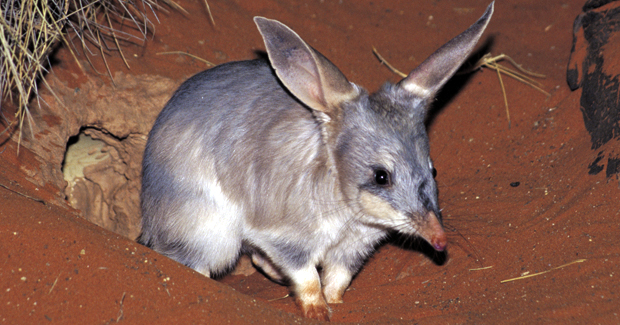
Perhaps most fascinating of all, his recollections show just how diverse and rich the small mammal fauna of the Fleurieu Peninsula truly was, as he recalled the loss of the Pinkie (Greater Bilby) and Squirrel (the name sometimes given to the Sugar Glider [when preceded by the term “flying”], but in this case probably the Brush-tailed Phascogale).
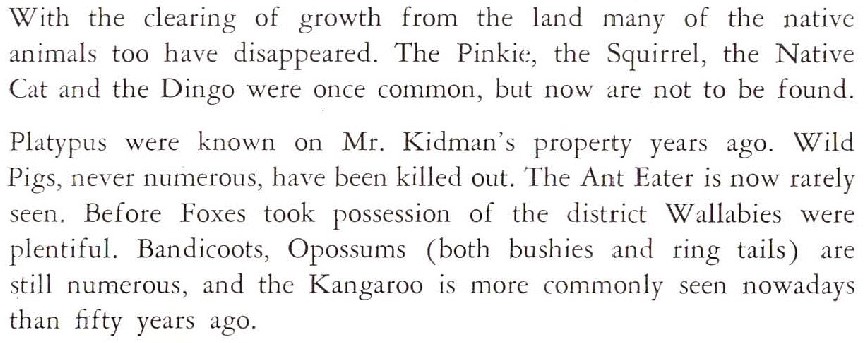
These observations are supported by many other references from the same era, including those recorded by Wood Jones in his review of South Australian Mammals in 1923. For one example, here is his entry on Pinkies / Bilbies in temperate districts of SA:
Albert Waye went on to live until 1961, when he died at the age of 74. Like so many other settler families of that district who relied upon the drained peat swamps of the valleys around Mount Compass for their livelihood, he was a proud market gardener.
In this series of blogs we’re particularly focussing on our lost mammals, but as Albert’s was a keen bird watcher, it turns out that he has a bit more to share with us about the natural history of the Mount Compass district. The one that leaps out for me is that Mount Compass originally had a “plentiful” Malleefowl population – now I wasn’t expecting that!
We owe a lot to people like Albert for leaving us a detailed, albeit brief, glimpse of the past – even if it is now buried in a small town history book; out of reach and long forgotten by most people.
Have a read, and step back in time…

